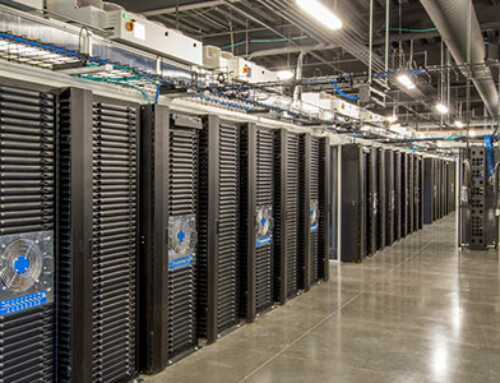Network infrastructures are the foundation on which modern businesses operate, supporting everything from data management and online services to communications. This simple overview explores the key components of a network infrastructure and how optimizing it can benefit your business.
What is a network infrastructure?
A network infrastructure refers to the hardware and software components that enable connectivity and communication between various devices, systems, and users within an organization or across multiple organizations. It provides the framework for data transmission, applications, and services to operate smoothly, ensuring seamless information exchange and resource sharing.
A network infrastructure typically comprises the following:
- Network devices – These include routers, switches, hubs, firewalls, and access points. Routers direct traffic between networks, while switches connect devices within a network. Hubs and access points also facilitate network connections but with varying capabilities. Meanwhile, firewalls provide security by filtering incoming and outgoing traffic based on predefined rules.
- Cabling – Ethernet cables, fiber optic cables, and coaxial cables are used for physical connections within a network. Different types of cabling have varying speeds, bandwidths, and transmission capabilities.
- Servers – Servers store, manage, and distribute data and applications across a network. They can be physically installed on site or virtually hosted off site in the cloud.
- Network operating system (NOS) – An NOS manages network resources and services. Popular NOSes include FortiOS and Cisco IOS.
- Security measures – A network infrastructure can be vulnerable to cyberthreats, which is why security measures such as firewalls, intrusion prevention systems, and antivirus software are necessary. These use advanced techniques to protect networks from attacks and unauthorized access.
What are the most common network infrastructure types?
In business settings, there are various network infrastructure configurations to choose from depending on the organization’s needs and size. Some of the most common types include:
Local area network (LAN)
A LAN is a network of devices connected over a limited area, such as a building or an office. This type of network typically uses wired connections and can be set up with minimal hardware and software. LANs are commonly used for sharing resources between computers, printers, and servers. Given their limited coverage, a LAN is usually best suited for small- to medium-sized businesses.
Wide area network (WAN)
A WAN connects devices over a large area and often consists of multiple LANs. It uses various technologies, including leased lines, public internet connections, and virtual private networks (VPNs) to link distant sites together. This makes WANs ideal for organizations with multiple branches or remote workers.
Wireless LAN (WLAN)
A WLAN is a type of LAN that uses wireless technology, such as Wi-Fi, to connect devices within a confined area without the need for physical cables. WLANs are cost-effective, easy to set up, and can support a large number of devices. They are commonly used in offices as well as public spaces such as cafes, airports, and hotels for customer convenience.
What are the advantages of having a robust network infrastructure?
Having a well-optimized network infrastructure offers many benefits for businesses, including:
- Redundancy and reliability – Redundancy in network design ensures that there are backup components or paths in case of hardware failures or network outages. Redundancy minimizes downtime and helps maintain network availability. Having a reliable network is critical for businesses as it ensures that essential services and data are available when needed, increasing productivity and customer satisfaction.
- Performance – A well-designed network infrastructure can provide high-speed and low-latency connections, allowing for faster data transfer and response times. This is beneficial for tasks such as real-time communication, video conferencing, and large file transfers.
- Scalability – A robust network infrastructure is capable of handling heavy traffic from a large number of devices and users with minimal impact on performance. As businesses grow, their network can easily adapt to accommodate increased demand, avoiding the need for frequent and costly upgrades.
- Security – When a network infrastructure is well designed and optimized, it can provide a secure environment for data and services. Network security measures help defend against constantly evolving cyberthreats, ensuring the confidentiality, integrity, and availability of critical systems.
- Cost efficiency – While building a robust network infrastructure can involve upfront costs, it can also lead to long-term cost savings. Reliable networks reduce the expenses associated with downtime, lost productivity, and network maintenance.
- Improved collaboration – With an optimized network infrastructure, employees across different locations can easily share resources and communicate in real time, fostering collaboration and teamwork. This is particularly vital for companies with remote workers.
- Future-proofing – Advanced network infrastructures are more than capable of handling emerging technologies, such as cloud computing, the Internet of Things (IoT), and artificial intelligence. By investing in a robust network infrastructure, businesses can position themselves better for future growth and innovation.
How to optimize your network infrastructure
To reap the benefits of a robust network infrastructure, it’s essential to optimize its design and operation. Here are a few ways to achieve this:
Perform regular maintenance
Regular maintenance involves keeping all network components up to date. Firmware updates, security patches, and software upgrades should be applied promptly to ensure that the network is equipped with the latest features and security enhancements. This minimizes vulnerabilities and ensures that the network operates at its best.
Monitor your networks
Network monitoring tools enable businesses to quickly identify issues related to internet bandwidth, resource allocation, network performance, and device conditions. Through analytics, administrators can gain insights into network traffic patterns, potential bottlenecks, and areas where improvements are needed. This measured approach allows for proactive issue resolution, reducing downtime and enhancing network efficiency in the process.
Take advantage of load balancing
Load balancing is a strategy to distribute network traffic evenly across various network components and links. This prevents overloads on specific devices or links, ensuring that resources are utilized optimally. Load balancers can be hardware- or software-based and are particularly useful in high-traffic environments, in data centers, and for distributing requests to multiple servers to enhance application performance.
Leverage Quality of Service (QoS)
QoS is a network management technique that prioritizes network traffic based on the company’s application and service requirements. For instance, real-time services such as voice and video communication may be given higher priority to guarantee seamless performance. By assigning different levels of importance to various types of traffic, network administrators can ensure that essential applications receive sufficient bandwidth even during peak usage periods.
Partner with a network security and management specialist
Partnering with a reliable network security and management provider can help take the burden of optimizing and securing your network infrastructure off your shoulders. These providers have advanced tools, expertise, and support to manage networks proactively, identify potential vulnerabilities, and deliver solutions tailored to your unique business needs.
There’s a lot that goes into building and optimizing an effective network infrastructure, and the benefits are well worth it. To take your network to the next level and harness its full potential, contact Dynamic Solutions Group today. We can help you design, manage, and secure a robust network infrastructure that meets your business’s unique requirements.






